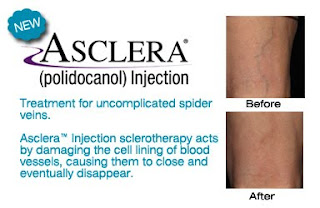 Ear surgery, or otoplasty, is usually done to set prominent ears back closer to the head or
Ear surgery, or otoplasty, is usually done to set prominent ears back closer to the head orto reduce the size of large ears.
CANDIDATES FOR OTOPLASTY:
The operation is done on children between the ages of 4 and 14 or adults at any age. Ears are almost fully grown by age four, and the earlier the surgery, the less teasing and ridicule the child will have to endure. Ear surgery on adults is also possible, and there are generally no
additional risks associated with ear surgery on an older patient.
CONSULTATION & PREPARATION:
Parents should stay alert to their child’s feelings about protruding ears; don’t insist on the
surgery until your child wants the change. Children who feel uncomfortable about their ears
and want the surgery are generally more cooperative during the process and happier with
the outcome.We will also give you specific instructions on how to prepare for surgery.
RISKS & COMPLICATIONS:
When ear surgery is performed,complications are infrequent and usually minor.
Nevertheless, there are risks associated with surgery and specific complications associated
with this procedure.
A small percentage of patients may develop a blood clot on the ear. It may dissolve
naturally or can be drawn out with a needle. Occasionally, patients develop an infection in
the cartilage, which can cause scar tissue to form. Such infections are usually treated with
antibiotics; rarely, surgery may be required to drain the infected area. Recurrence of the
protrusion, may require second surgery.
HOSPITAL STAY/OUT-PATIENT:
Ear surgery is performed as an outpatient procedure.
ANESTHESIA:
If your child is young, we recommend general anesthesia, so the child will sleep through the
operation. For older children or adults, we prefer to use local anesthesia, combined with a
sedative.
OPERATING TIME:
1-2 hours.
THE SURGERY:
The technique will depend on the problem.
A small incision is taken on the back of the ear to expose the ear cartilage. The cartilage is
sculpted and bent back toward the head. Non-removable stitches are used to help maintain
the new shape. Occasionally, a larger piece of cartilage is removed to provide a more
natural-looking fold when the surgery is complete.
Another technique involves a similar incision in the back of the ear. Skin is removed and
stitches are used to fold the cartilage back on itself to reshape the ear without removing
cartilage.
In most cases, ear surgery will leave a faint scar in the back of the ear that will fade with
time. Even when only one ear appears to protrude, surgery is usually performed on both
ears for a better balance.
THE RECOVERY PERIOD:
Adults and children are usually up and around within a few hours of surgery.
The patient’s head will be wrapped in a bulky bandage immediately following surgery to
promote the best molding and healing. The ears may throb or ache a little for a few days,
but this can be relieved by medication.
Within a few days, the bulky bandages will be replaced by a lighter head dressing similar to
a headband. Be sure to follow our directions for wearing this dressing, especially at night.
Stitches are usually removed, or will dissolve, in about a week.
Most adults can go back to work about 5 days after surgery. Children can go back to
school after 7 days or so, if they’re careful about playground activity.
THE NEW LOOK:
Most patients, are thrilled with the results of ear surgery. But don’t expect both ears to
match perfectly-perfect symmetry is both unlikely and unnatural in ears. If you’ve
discussed the procedure and your expectations with us before the operation, chances are,
you’ll be quite pleased with the result.
OTHER EAR PROBLEMS
Besides protruding ears, there are a variety of other ear problems that can be helped with
surgery. These include: “lop ear,” when the tip seems to fold down and forward; “cupped
ear,” which is usually a very small ear; and “shell ear,” when the curve in the outer rim, as
well as the natural folds and creases, are missing. Surgery can also improve large or
stretched earlobes, or lobes with large creases and wrinkles. Surgeons can even build new
ears for those who were born without them (microtia) or who lost them through injury (ear
reconstruction)


 According to WebMD.com, about
According to WebMD.com, about





